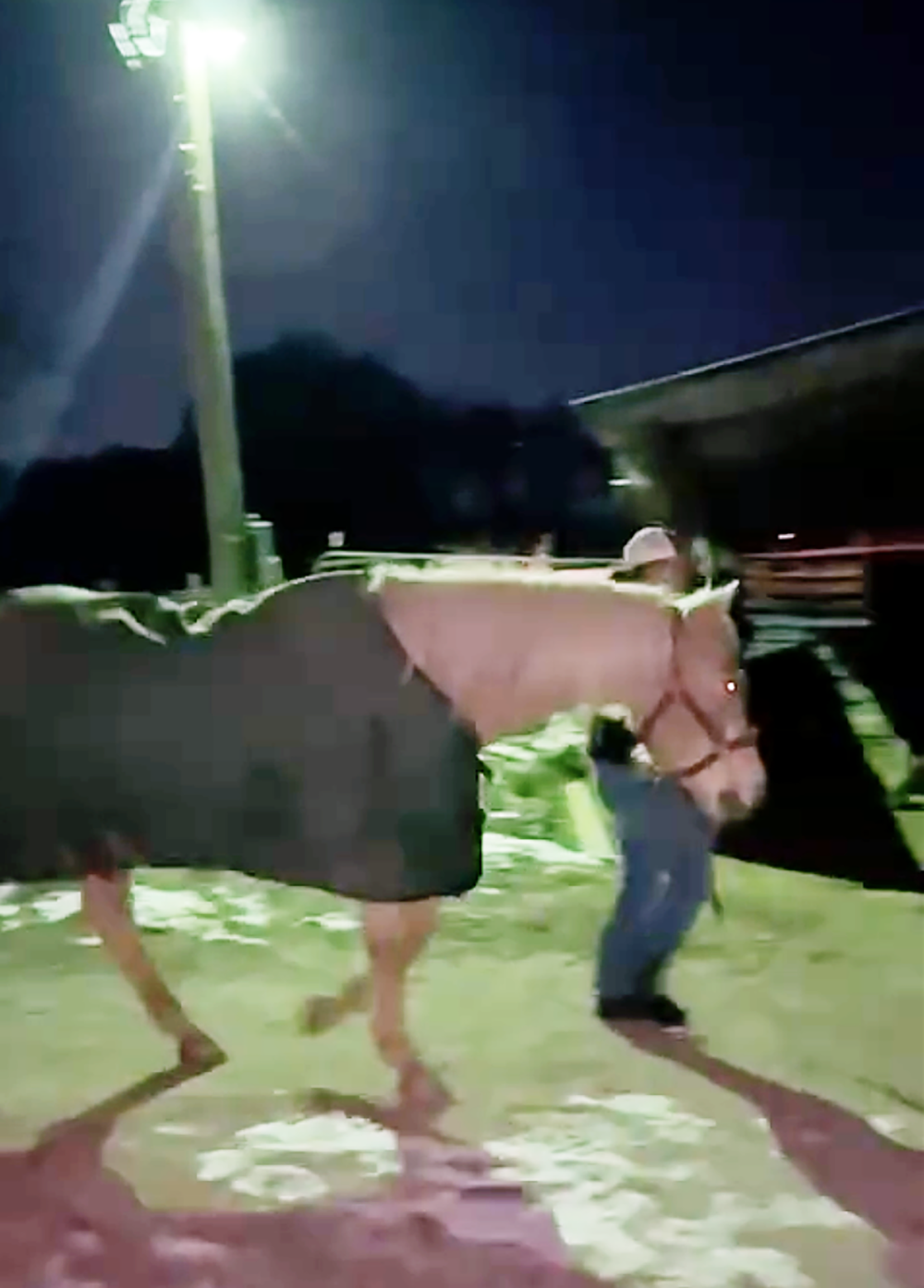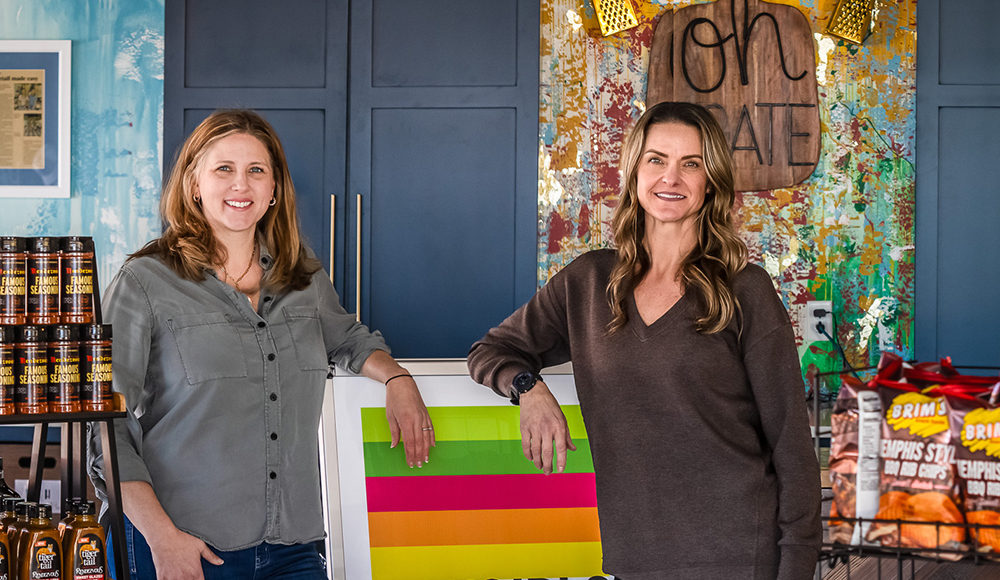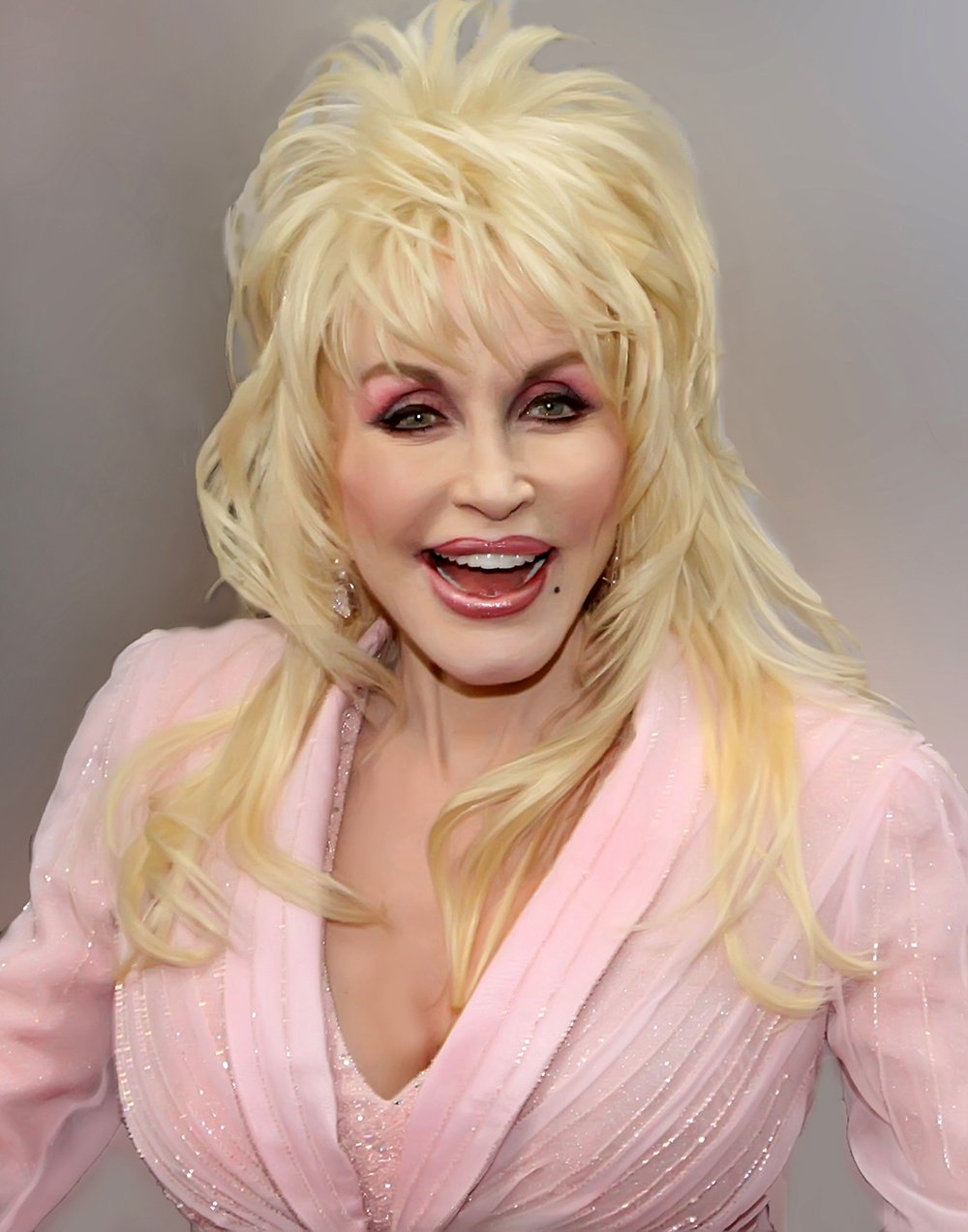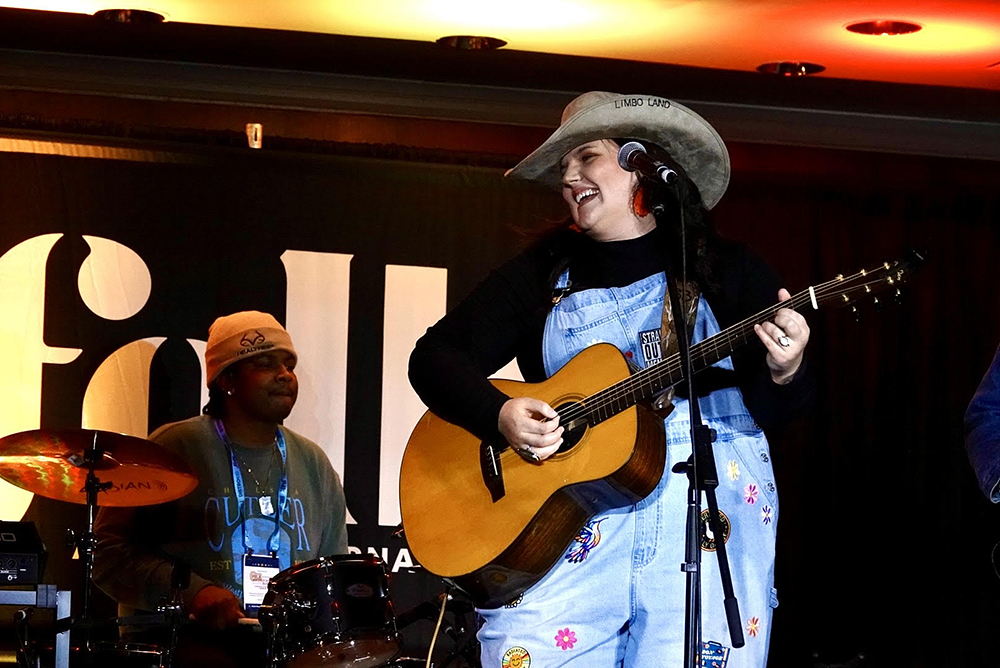Oh Grate! is getting greater. Or “grater.”
They still use graters for the cheese on some of their frozen ready-to-heat meals, and sales of their Fiesta Sauce (formerly known as Tropical Dressing) as well as new innovations in their product lineup have been great, says Amy Bingham, co-owner with Courtney Jones of the store at 2028 West Poplar Avenue, Suite 104, in Collierville, Tennessee.
First the Fiesta Sauce: “It’s still going really well,” Bingham says. “We’re shipping it out all over the country.”
The sauce is based on the green dressing, a mustard-vinegar based salad dressing, that was served at the old Pancho’s Mexican Restaurants. “We missed the Pancho’s green sauce that everybody put on tacos and taco salads,” Bingham says.
Jones began making it when Pancho’s still had restaurants in Memphis. “I had made it for years at home,” she says. “Oftentimes it would be hard to find at Kroger. Once Pancho’s was sold, you could not find it any longer.”
It wasn’t difficult to unearth the original Pancho’s recipe. “Everybody likes to throw out the recipes. You can find them online. A copycat Pancho’s dressing.”
She made some changes to the original recipe, which she later had to adapt for shelf life and to make it in bulk while “trying to keep that quality as best as we could, true to the original sauce.”
“Next thing we knew our doors were blown off and everybody was here trying to get the green sauce.”
Sales of their Fiesta Sauce “went viral last year,” Bingham says.
They changed the name from “Tropical Dressing” to “Fiesta Sauce” last year because “people were confused about the flavors,” Bingham says. Was it salsa or tropical? Pancho’s referred to its sauce as “Tropicale Salad Dressing.”
But the “main thing that has really changed” at Oh Grate! is the inclusion of locally-made products in their store. “We kind of tapped into an audience of people who love food from Memphis.”
In addition to honing in on “the nostalgia from Pancho’s,” they wondered what else they could offer so people “could relive some of these Memphis memories.”
Charlie Vergos’ Rendezvous was at the top of their list. “We formed a partnership with Rendezvous, and we sell their products here at our store. We sell ribs, smoked sausage, all their sauces and seasonings. And that has been wildly successful.”
Not everybody can just hop in their car and drive an hour or so from Collierville to the Rendezvous at the last minute. “You’re just craving Rendezvous, but you’re not going to drive Downtown unless it’s a special occasion,” says Bingham.
They also began carrying products, including juices and meals, from RawGirls. “It’s all fresh, all tailored to meet a targeted need. So, the Charcoal Lemonade is for detox; Sinus Shot is best this time of year. Everybody’s got the sniffles. It’s packed with ginger and vitamin C, so that really enhances the effectiveness.”
Arbo’s Cheese Dip is another item. This was founder Andrew Arbogast’s answer to Pancho’s cheese dip after Pancho’s moved out of Memphis.
They sell the chips and white cheese dip from Las Delicias as well as the “top-notch toffee’” from 901 Bakehouse in Germantown.
And they carry the homemade sourdough bread and pizza dough from Southern Flourery No. 6 in Collierville, not to mention short bread cookies and pound cakes from Made From Scratch Cookie Company.
Their counters now include Memphis Grindhouse Coffee, Dancing Peppers salsa, and products from Brim’s Snack Foods, which makes several products in addition to its popular pork rinds.
A line of mustards, including hot and spicy flavors, from Harvest Gourmet in Cookeville, Tennessee, is their newest addition. They discovered it at Harvest Gourmet’s booth at the recent Mid-South Sports & Boat Show at Agricenter International. “We tasted their mustard and just fell in love with their products.”
They “made a pretty large purchase” and put the products in their store, Bingham says. “It happened so quickly and unexpectedly. Less than 24 hours and we had met with them and had their products on our shelves.”
Another new product — Southern Chocolate Chess Pie — originated closer to home. Jones’ daughter Maddox Huey “started making pies at home,” she says. “And, of course, we have the facility here to help her with that. One day she made a chocolate chess pie at home. I tell you, the whole family was blown away.”
More pie flavors are on the way. “She’s about to begin making a key lime pie for us.”
Bingham and Jones enjoy helping people get their businesses off the ground. “It’s hard to know where to start a business,” Bingham says. “We want to help others along. We have this retail space that people have kind of come to know in this small area. But it can give exposure to smaller businesses as well.”
Oh Grate! also has had “great collaborations” with established businesses like the Rendezvous. “We’ve learned from them.”
They’ve been able to “share, grow, and help each other.”
As for the Oh Grate! heat-and-serve meals, all of which are made on-site, Bingham says, “We cover the gamut.”
They make soups, sliders, and ready-to-eat dinners with different entrees, including chicken spaghetti, shrimp Alfredo, meatballs, and marinara. They also carry lunch and party items, including chicken salad and pimento cheese. “We are your one-stop shop for not having to cook.”
Last year, Oh Grate! introduced a new item: Energy Bites, which Jones describes as “little power balls,” including oatmeal, flax seed, peanut butter, honey, and chia seeds. “We’re now making hundreds and hundreds of energy balls.”
Some Oh Grate! products are available locally at High Point Grocery, South Point Grocery, and Cordelia’s Market. “We firmly believe in local,” Bingham says. “Local grocery stores are vital to our success as well.”
They recently began selling their products in North Mississippi stores “all the way down to Batesville,” including Piggly Wiggly.
Much of their success is “due to our amazing team,” Jones says. “We now have 17 people that work with us part-time. Everyone is part-time but me and Amy. None of this would be possible without them.”
What’s next for Oh Grate!? “I would say our most requested item is the Pancho’s hot dip recipe,” Bingham says. “That is what we get asked for quite often. I feel it would do quite nicely in our lineup.”
People just referred to it as “the hot dip,” Jones says.
Will that be on Oh Grate! shelves one day? “It’s something we are looking into,” Bingham says. “It takes a while to launch a product.”
But, Jones adds, “There’ve been some test batches.”












